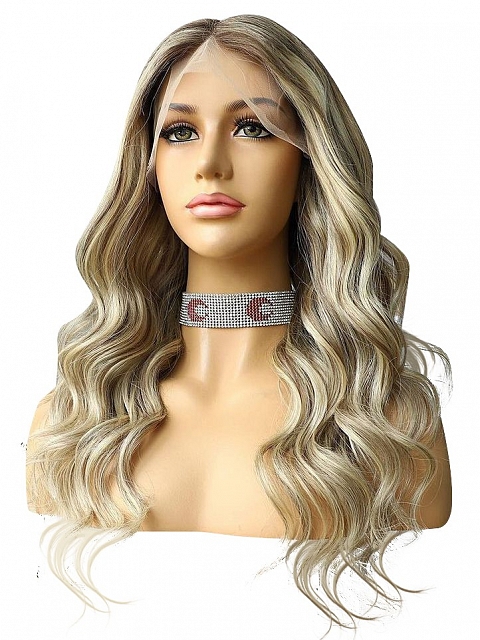Why hair loss occurs?
It is a very common phenomenon that all of us suffer from hair loss to varying degrees. Nowadays, people are living more and more stressful lives and hair loss is becoming increasingly serious.
According to studies by experts and scholars, there are several causes of hair loss: it can be the result of genetics, hormonal changes, medical conditions or accompanying ageing. The term "baldness" usually refers to the excessive loss of hair on the scalp. You may have localized hair loss, such as alopecia areata or a high hairline, also known as "seborrheic alopecia", or the "Mediterranean" haircut we often joke about. You may also be a "bald person", hair loss problems of this kind of are more serious.
However, hair loss is not an insurmountable problem, and in the 21st century, there are a variety of ways to remedy these defects. First, hair transplants can help us grow new hair. Second, some cosmetics such as hairline powder can also work. And third, wigs are a very good option for most people. They are not too expensive compared to other methods, and they are easier to design and renew, which is very relevant to the current thinking of people with hair loss.

Related: Hair Loss In Women: What Causes It And How To Solve It
If you also have troubles about your hair, try a wig, it will surely give you back your confidence, enhance your temperament and improve your mood.
Are wigs really such magical things? Let's find out together!
How to choose the most suitable wig for me?
Of course, the choice of wigs is also a learning curve. There are many types of wigs, for example: Human Hair Wigs, Synthetic Hair Wigs, Wigs For Alopecia, Wigs For Chemo and so on. You are probably thinking, what kind of wig should I choose?
Related: Chemotherapy-Induced Hair Loss: Why Does It Occurs And How To Manage
Do not worry, we have organized for you a wealth of knowledge about wigs and the basic operation of the selection of wigs. When you find a wig you truly love and are willing to buy it, these factors can help you determine if it is the right wig for you.
Next, let's present these factors for you in turn.
A. Cap construction
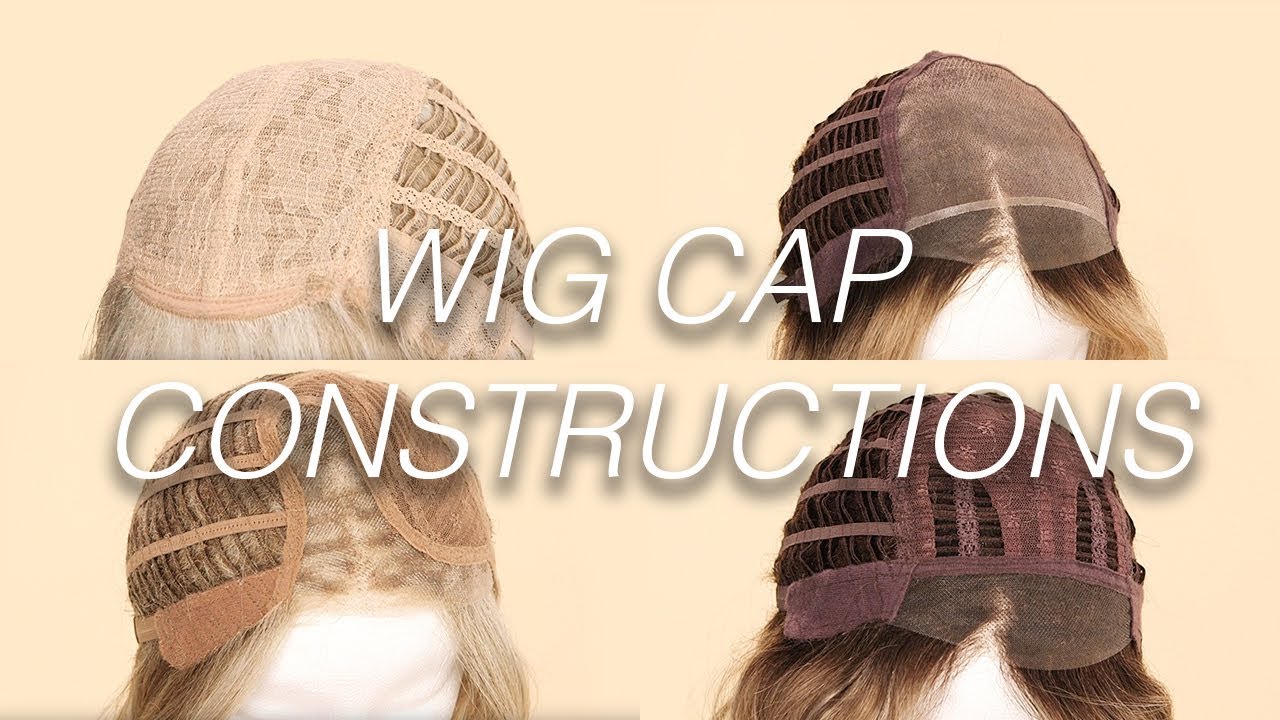
As a first time wig buyer, I am probably attracted by its natural colors, high quality materials and attractive prices. Most first time buyers probably don't focus on this aspect of cap construction. It is indeed easy to be overlooked, but at the same time this factor is very important. If the cap construction is perfectly fitting for your head, it will substantially enhance your wearing experience. On the contrary, if you ignore this factor, the wig you buy may leave you a negative impression.
To make sure you feel comfortable and fabulous while wearing a wig, we have made a list of cap construction, We've put together a list of hat constructions and provided a brief description of each type. Let's take a in-depth look!
a. Monofilament Wigs
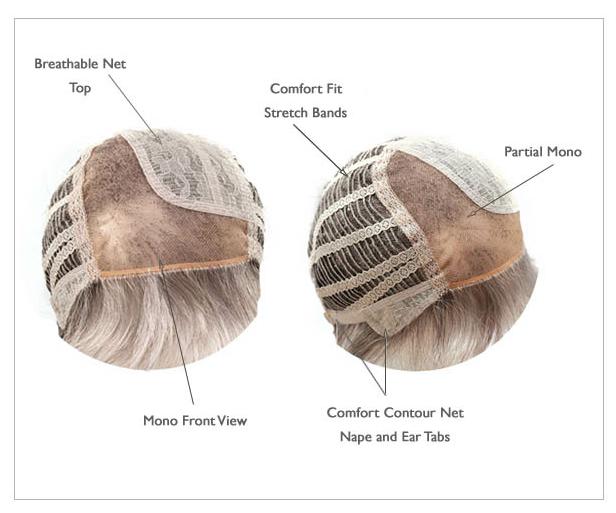
The monofilament wig is primarily used on top of the head and is made of soft nylon mesh or colorless polyester. Its sheer look blends perfectly with your original hair color, giving your hair a uniform hair color and a more natural and homogeneous look.
Monofilament wigs include four major types: Monofliament top, Monofilament part,Monofilament crown, Double monofilament wigs. They are categorized by where the clear mesh is placed on the cap. Monofilament wigs are easy to shape and are made of a lighter, softer material. They are suitable for people with more sensitive skin.
b. Lace Front Wigs
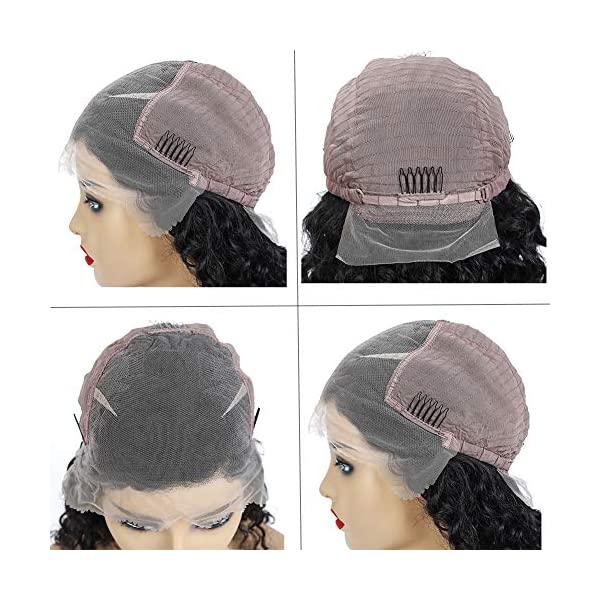
As the name suggests, a lace front wig is a wig that utilizes lace material. There is a piece of lace in the forehead area of the wig which is transparent in color and the edge of the lace is certainly not noticed. Considering the lace is very fragile and easy to damage. The other materials used to attach the lace mesh to the wig cap are more resilient and tougher.
In this type, lace plays a very important role because it can be silent in concealing the hairline and become the secret keeper. The invisibility of the lace edge wig is excellent. Therefore, this type of wig is a nice choice for people with a high hairline.
In recent years, lace front wigs have become more and more popular, and many celebrities actively promote them on the internet.
c. Full lace wigs
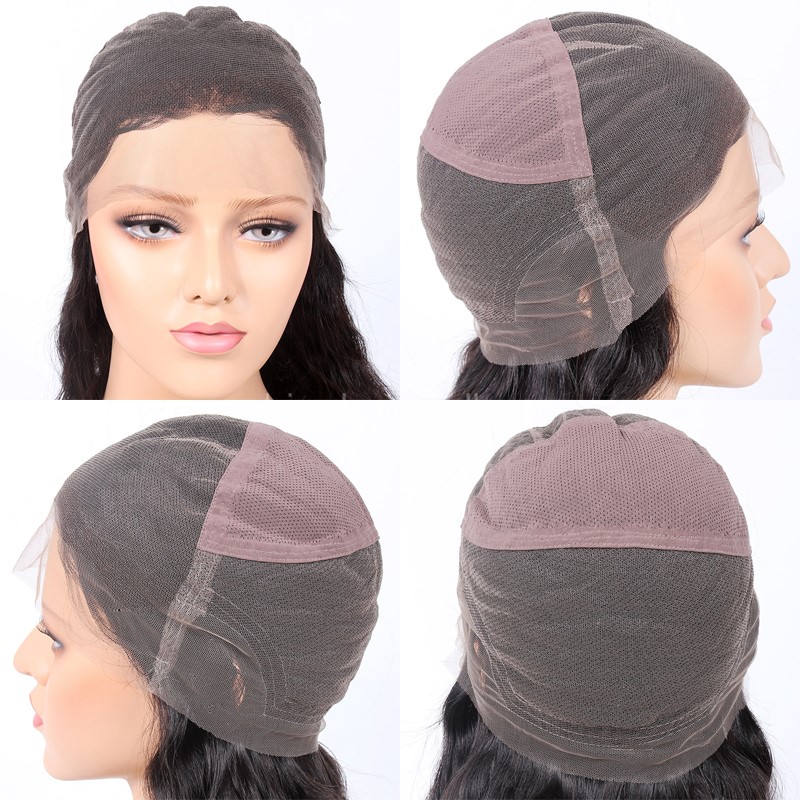
A full lace wig refers to covering the entire base or the entire top of the wig with lace, passing your own hair through the lace mesh and attaching it to the wig, which fits perfectly on your head and can adapted to your skin tone as well. They are as light as cotton and very discreet.
Flexibility is the most distinctive feature of the full lace wig. You can use your imagination to transform it at will, as it possesses great malleability. A variety of hair extensions similar to ponytails can also be easily achieved, as long as you learn to wear it correctly.
Many people are very interested in both full lace wigs and lace front wigs, and there are many questions and discussions about them online, which we will answer in detail later.
d. Hand-tied Wigs
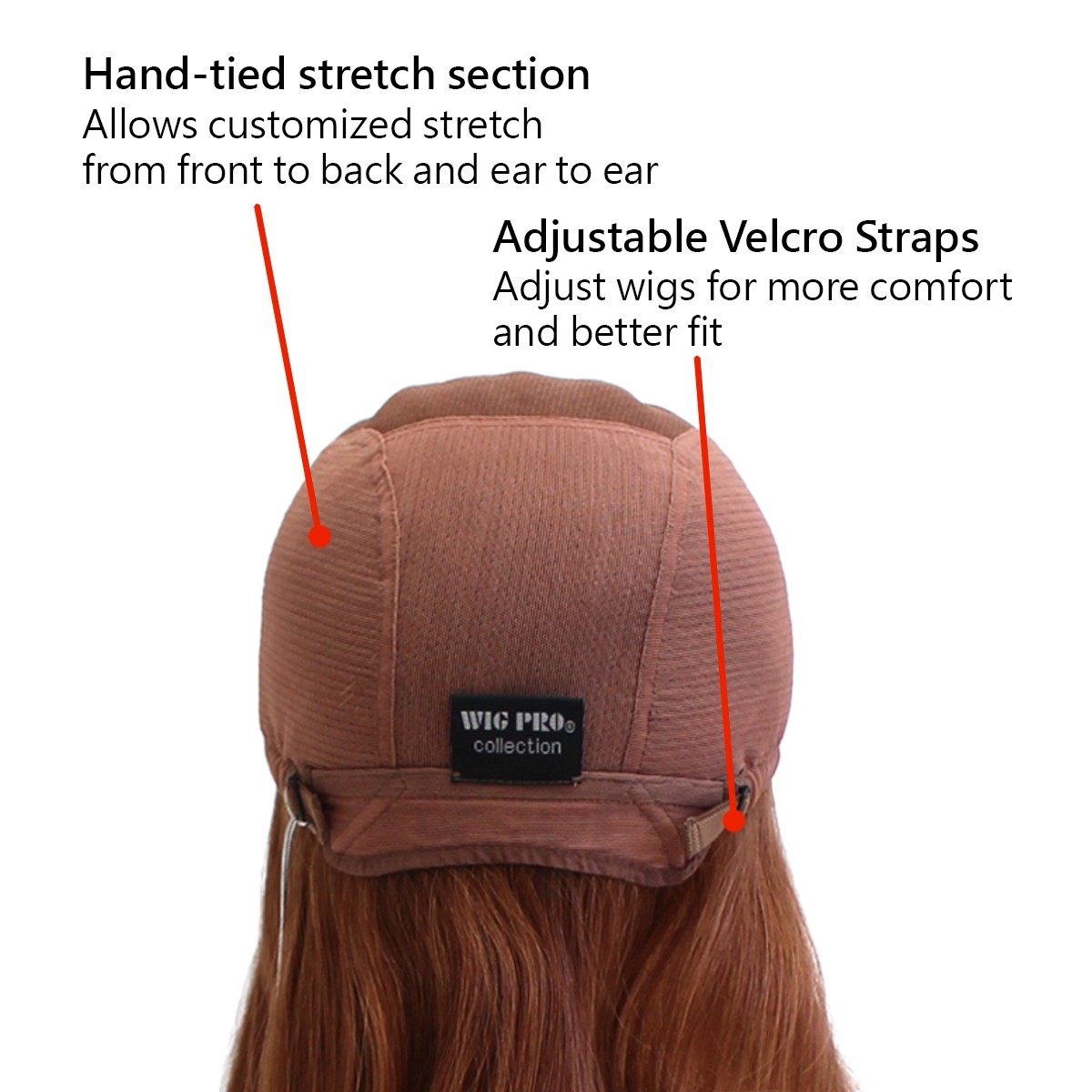
Its name already reveals the tool used to make it - Hands. Synthetic methods or human hair can be used to create hand-tied wigs. It takes a lot of effort and time to complete a hand-tied wig, and each strand of hair must be hand-tied into a knot by a specialized technician to make a fine, soft mesh, so it can take up to three days to make just one hand-tied wig.
The process of making a hand-tied wig is very arduous, but its exquisite craftsmanship attracts many people, which is considered to achieve its unique value.
Most wigs will bind your hair more or less, but this wig will allow your hair to be unrestrained and flow with the wind thanks to its intricate workmanship. You can change your hairstyle according to your mood, whether it is tied or draped. The mesh side is also perfect for summer, as it not only doesn't make your scalp sweat, but helps it breathe!
e. Wefted/Open Cap Wigs
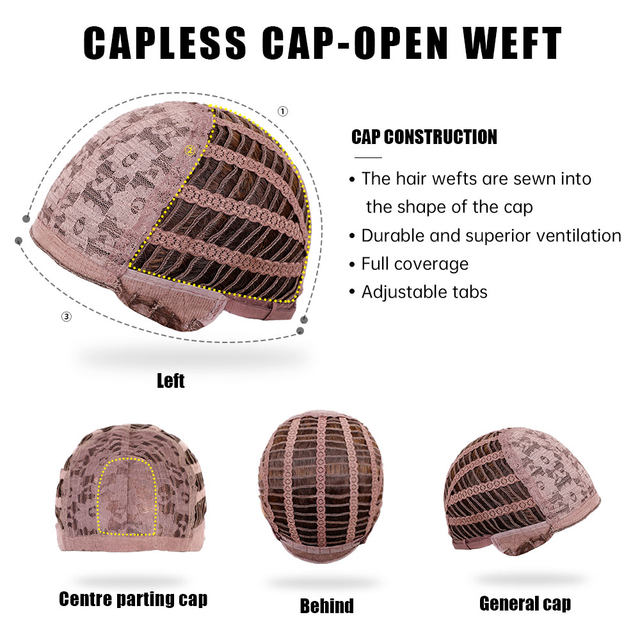
Open cap wigs are also known as "capless" wigs or weft wigs. It is a machine-made wig cap that uses a piece of light elastic material to sew the weft part and the hair strand together. This step requires some delicate techniques to trim and cover the wefts so that they are not visible.
Most purchasers will use this type of wig cap with other cap constructions so as to maximize its effectiveness, such as lace fronts, monofilament sections and crowns, and hand-tied sections of wigs.
The open cap wig has many advantages: extremely thin quality, allowing the scalp to breathe freely, easy to wear, and simple to care for, etc. It costs less compared to hand-tied hair.
f. Combination Wigs
As you can deduce from the title, this type of wig is a " hybrid " and it is also called a human hair hybrid wig. In fact, it is made by mixing human hair and synthetic hair in different proportions. The toughness of the hair, the greater durability and the diversity of functions make it the first choice for many people.
After all, it combines the advantages of both human hair and synthetic hair, for example, it is soft, smooth and tough, and can be dyed and permed for a long enough period of time, etc. How can you not be impressed by such a wonderful composition!
Lace Front vs. Full Lace: Which Is Better?
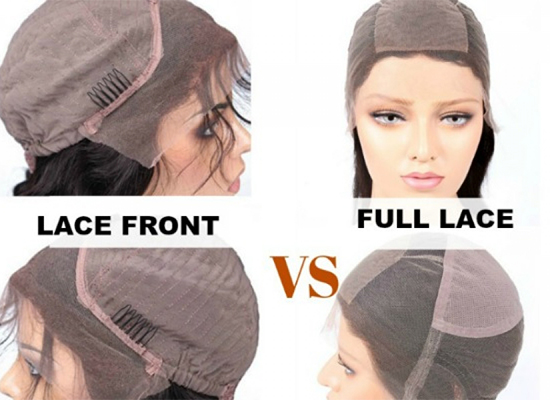
Lace Front Wigs
Pros:
- More affordable: Lace front wigs are generally less expensive than full lace wigs, making them a great option for those on a budget.
- Easy to wear: With a lace front wig, you don't have to worry about styling the hair at the back because the base is not made of lace. This makes lace front wigs a great option for those who want an easy-to-wear wig that requires minimal styling.
- Natural-looking hairline: The lace base at the front mimics a natural hairline, making the wig look more realistic.
Cons:
- Limited parting options: Because the lace base is only at the front, you cannot part the hair anywhere on the wig. You're limited to the parting space provided by the lace front.
- May slide around: If the lace front isn't properly secured, it can slide around and reveal the wig cap underneath.
Full Lace Wigs:
Pros:
- Versatile styling options: With a full lace wig, you can create a more natural-looking hairline by pulling the hair back or wearing it in a ponytail. Full lace wigs can be parted anywhere on the scalp, and the hair can be styled in any direction.
- Lightweight and breathable: The lace base used in full lace wigs is lightweight and breathable, making them perfect for those with sensitive scalps.
- Long-lasting: Full lace wigs are made of high-quality materials that can last for years with proper care and maintenance.
Cons:
- More expensive: Full lace wigs are generally more expensive than lace front wigs due to the higher quality materials and more versatile styling options.
- May require professional help: Installing a full lace wig can be more difficult than installing a lace front wig, and may require professional help.
B. Material
After understanding the construction of these hats and their respective characteristics, do you have a new perception of the wig? I guess you may be curious about wigs now. What are these wigs made of? What is their production process? How are they created? Such and such questions continue to come to mind.
Various types of wigs are made with different levels of complexity, different tools and steps, and we will show you the past and present life of wigs so that you can be more clear about your choice.
Then, we will travel back in time to see the initial appearance of these wigs.
a. Jute fibers
By the early 20th century, jute fiber was used as an imitation for theatrical wigs. Nowadays, the most popular material for theatrical wigs, especially those clowns wear, is Tibetan yak hair. The hair of this cattle species stays in the set well, can be easily dyed, and can take a beating from food and a shaving cream.
b. Synthetic hair
Synthetic hair wigs are also very popular. When discussing about wigs, one question often comes up: what are synthetic wigs? They are hair that is manufactured using artificial fibers made into fine filaments. Synthetic wigs are formed from polymers that look and feel very similar to human hair. These polymers can be made into wigs that, through weaving or extensions, become a great solution to people's hair loss problems.
Unlike human hair, synthetic hair does not have keratin in it. Synthetic wigs are made using man-made polymers that are often paired with plastics such as acrylic, silk, acrylonitrile, silicone, PVC, vinyl and others.
c. Human hair
Human hair remains a popular choice for wigs, particularly because it has a natural loo. During periods of scarcity of cut real human hair for wigs, manufacturers have used combings. The hair used to make human hair wigs usually comes from Asia, India, Eastern Europe and South America. The manufacturer sorts the hair by length, removes hair that does not meet the requirements to be made into a wig (such as hair that has been dyed and permed and is dry and stringy), and then groups the hair into bundles according to length. Hair bundles of the same length are then grouped again to form a larger bundle, after which they are waiting to be sewn into wigs or hairpieces. This is often referred to as "virgin hair", in other words, the most natural hair that has not been colored and has not been subjected to chemicals.
In order to unify the color of a solid wig, the hair will be bleached to remove all color. At this stage, the wig can be carefully shaped to meet the specific requirements of the user, whether it is a single tone wig or a more individual wig.
d. Synthetic/human hair blends
Some manufacturers mix synthetic hair with human hair to create wigs that are long-lasting and hold their shape while having the fit and rhythm of human hair. However, on the other hand, this also makes it difficult to care for the hair, after all, different materials of hair have different needs for care methods. Therefore, for people who consider "convenience" as the first requirement, this type of wig can not meet their needs. At present, this hybrid wig is still not as popular as synthetic wigs and human hair wigs.
Human hair wigs and synthetic wigs have been a hot topic of discussion among purchasers and others interested in wigs. While we have described the composition (i.e. material) of both in detail above, we have found that many people are concerned with a question like "which is better, a human hair wig or a synthetic wig".
Now we present the advantages and disadvantages of human hair wigs and synthetic wigs in a more visual way.
Human Hair Wigs VS. Synthetic Hair Wigs

Human Hair Wigs:
Pros:
- One of the biggest advantages of human hair wigs is that they look and feel very natural. Because the hair is real, it can be styled and parted just like your natural hair. This makes them a popular choice for people who want to wear wigs but don't want it to be obvious that they are wearing one.
- Another advantage of human hair wigs is that they can be styled just like your own hair, with heat tools and products. You can curl, straighten, or even dye the hair to match your desired look. This makes them very versatile and allows you to change up your hairstyle as often as you like.
- If cared for properly, human hair wigs can have a longer lifespan than synthetic wigs. With the right maintenance and upkeep, they can last for a year or more.
Cons:
- Human hair wigs are generally more expensive than synthetic wigs. This is because the raw materials are more costly, and the production process is more time-consuming and labor-intensive.
- They require more maintenance and upkeep than synthetic wigs. You need to wash and condition them regularly, and keep them away from humidity and heat sources. If you neglect to care for them properly, they can become tangled and frizzy.
- They can be affected by weather conditions, such as humidity or rain. If you're wearing a human hair wig on a hot, humid day, it may start to frizz or lose its shape.
Synthetic Hair Wigs:
Pros:
- One of the main advantages of synthetic hair wigs is that they are usually more affordable than human hair wigs. This makes them a great option for people on a budget, or for those who only wear wigs occasionally.
- Synthetic wigs require less maintenance than human hair wigs, since they hold their style even after washing. This means that you don't need to spend as much time and money on upkeep.
- They are not affected by weather conditions, so they can be worn in any climate. Whether it's raining or hot and humid outside, your synthetic wig will maintain its shape and style.
Cons:
- Synthetic hair wigs don't look or feel as natural as human hair wigs. Although modern synthetic wigs have come a long way in terms of realism, they still can't quite match the look and feel of real hair.
- They cannot be styled with heat tools, since the hair is synthetic. This means that you can't curl or straighten them using a flat iron or curling wand. However, some synthetic wigs are pre-styled or can be restyled with low-heat styling tools.
- They have a shorter lifespan than human hair wigs, and can start to look worn or frizzy over time. Depending on how often you wear your wig and how well you care for it, a synthetic wig may need to be replaced after a few months.
C. Texture and Style
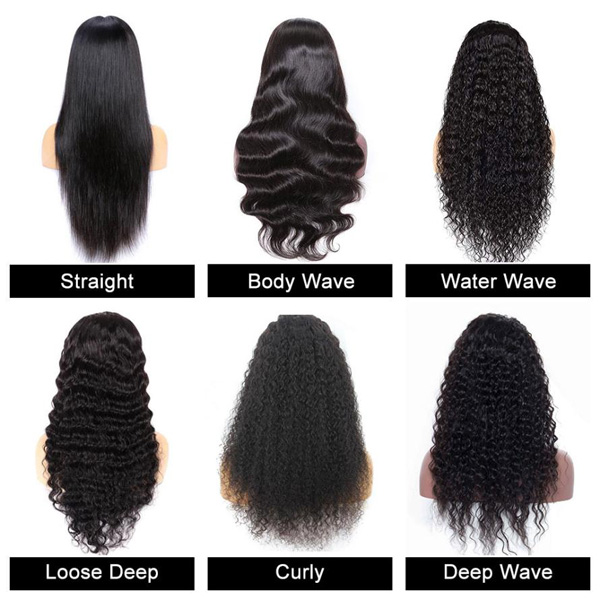
Human hair wigs come in various textures, including straight, curly, wavy, and kinky. It's important to choose a texture that matches your natural hair so that the wig looks seamless. If you have curly hair, for example, you may want to choose a curly wig so that the transition from your natural hair to the wig is smooth.
In addition to texture, consider the style you want. Do you want a long or short wig? Do you want bangs or a middle part? If you're unsure about the style you want, try on different wigs to see what looks best on you.
D. Cap Size and Fit

It's crucial to ensure that your wig fits comfortably and securely. Measure your head to determine your cap size before making a purchase. If your wig is too tight, it can cause headaches, while a loose wig can slide around, causing discomfort and embarrassment.
Most wigs come with adjustable straps that allow you to customize the fit to your head size. You can also use wig grips and adhesive tapes to keep the wig in place. Make sure to adjust the wig properly for a comfortable fit.
E. Quality and Price
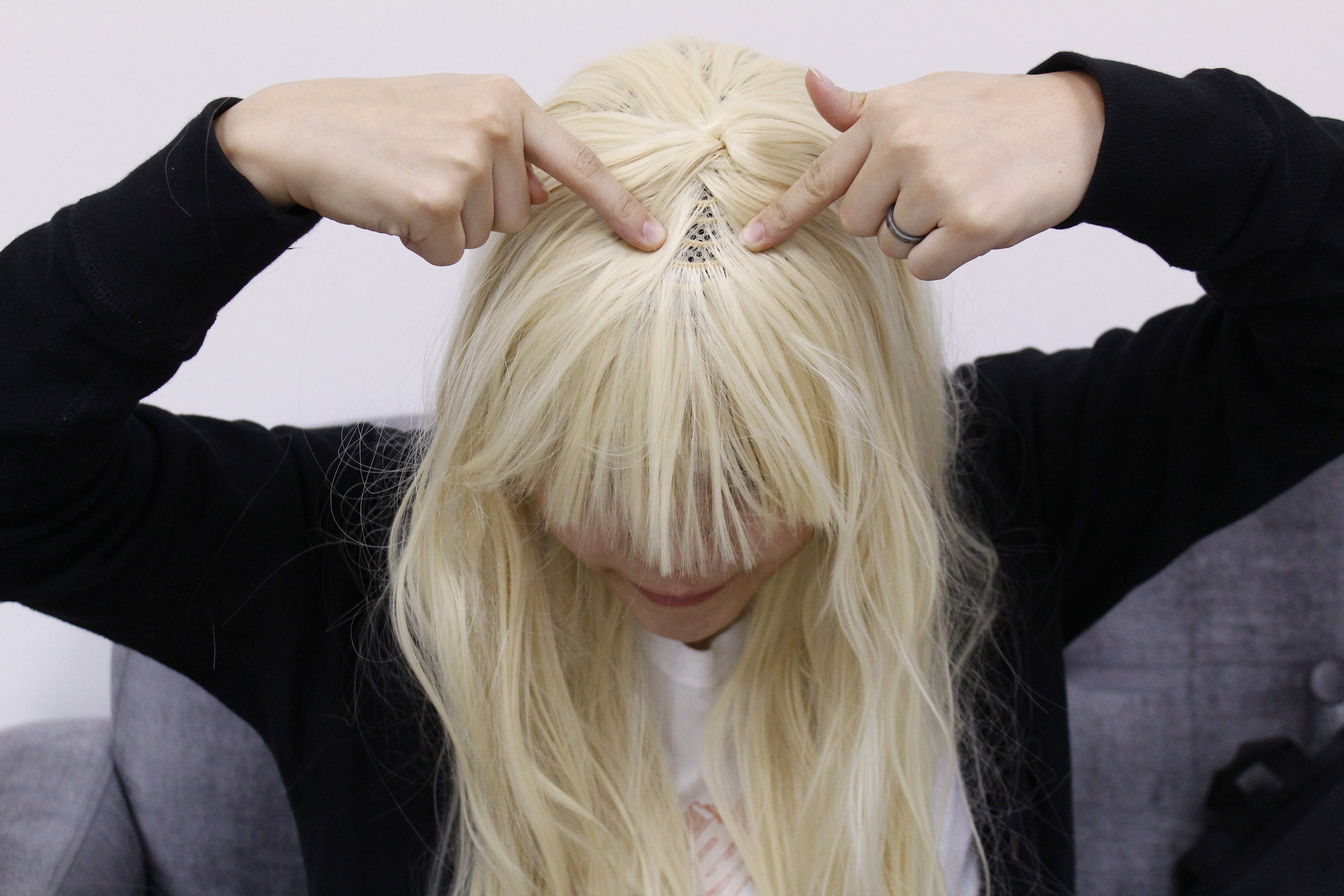
The quality of your wig will affect its durability, appearance, and how well it holds up over time. Human hair wigs are generally more expensive than synthetic wigs, but they also last longer and look more natural. Consider your budget and how often you will wear the wig when deciding on the quality and price of your wig.
When it comes to quality, not all human hair wigs are created equal. Cheaper wigs may be made from lower-quality hair that tangles easily, while higher-end wigs use premium hair that is less prone to tangling and looks more realistic. If you're planning to wear your wig frequently and want it to last a long time, investing in a high-quality wig is worth considering.
F. Color and Maintenance
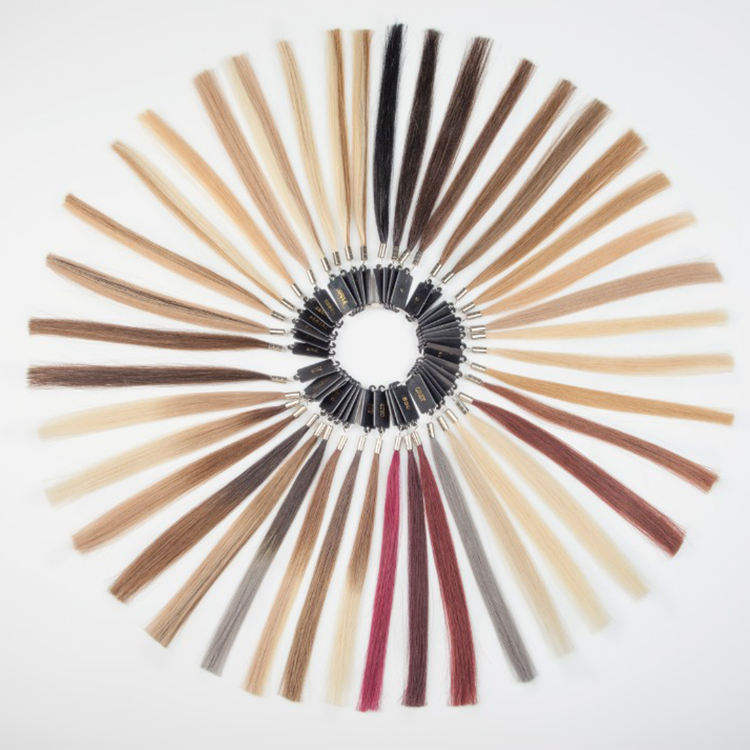
When selecting a wig color, choose one that complements your skin tone. It's important to consider how much maintenance your wig will require. Human hair wigs require regular washing, conditioning, and styling to maintain their appearance.
Consider your lifestyle when choosing a wig color and style. If you're an active person who spends a lot of time outdoors, a lighter color may require more maintenance and touch-ups to keep it looking fresh.
To maintain your wig, wash it regularly with a sulfate-free shampoo and conditioner. Use a wide-tooth comb to detangle the hair, starting from the ends and working your way up. You can also use styling products such as heat protectant spray and hair oil to keep the hair looking healthy duozhdeo
Choosing the right human hair wig is essential for achieving a natural look that complements your style. Consider the type of wig, texture, cap size and fit, quality and price, color, and maintenance when selecting a wig that looks and feels great. With the right wig, you'll be able to enhance your natural beauty and feel confident in your appearance.
Images credit: Google, Pinterest, YouTube.
